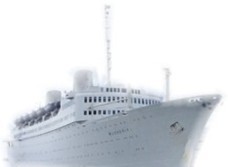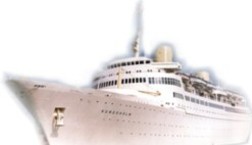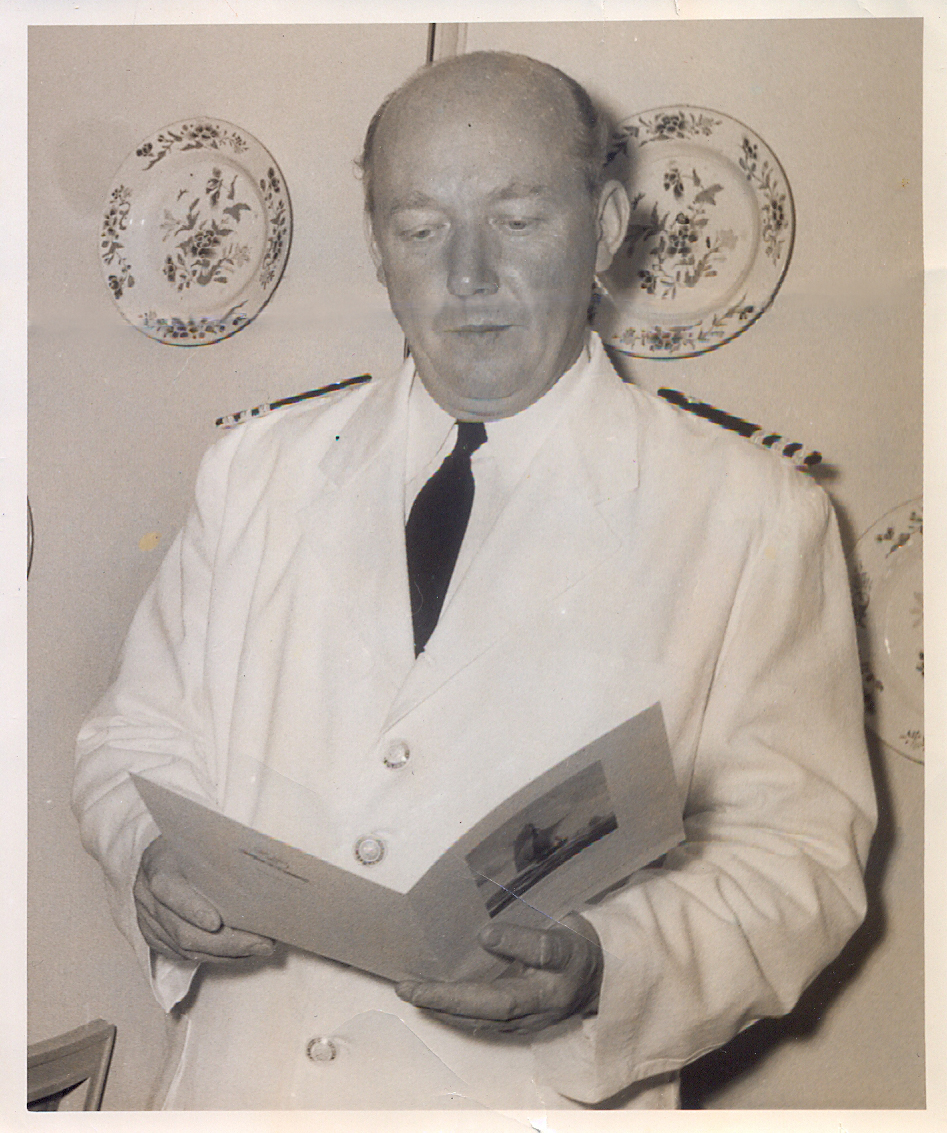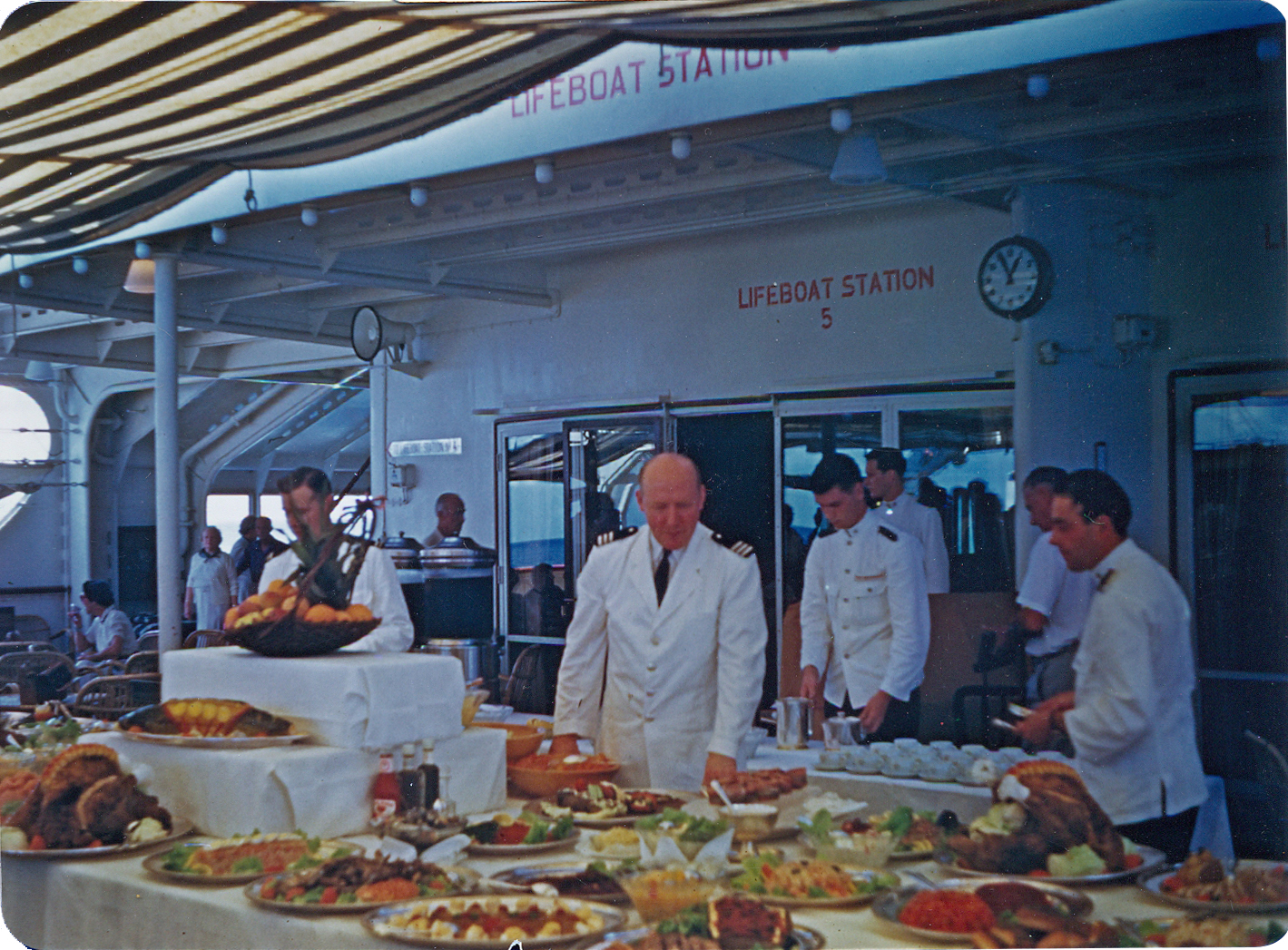”… Most of my knowledge in my profession I have actually learned from restaurant manager Lehnemann. Furthermore, if I think about how much I learned from Uncle Emil, and also a lot in Gotha, then my German stay has given me immensely and unforgettably things.
When I think back to Gotha and Thuringia, I remember a discussion I had with the chef at the Schloss-Hotel. One day, there were ”kroppkakor” on the menu. Called Thüringer Klössen in German. I stated that these were of Swedish origin and came from Öland. He was as stubborn as me and claimed that they came from Thuringia.
One day he send me a postcard where I could see a nationally dressed girl with a bowl of smoking hot ”kroppkakor” and there it was written ”Gruss aus Thüringen” and the following text:
"Wer hätte nicht davon gehört,
schon in der Schule wird’s gelehrt,
dass Thüringen seinen gut en Ruf
sich durch die rohen Klösse schuf."
I just had to give up, otherwise I would risk t be knocked down.
Of course, France is the leading country in terms of restaurant culture, but in terms of organization and discipline, Germany lacks equality. The Kaiserhof had a room for a la carte dinner. Cash registers were missing - despite the Krupp factory produced them - but instead there were so-called paragon books, with other words perforated bongs and carbon paper. At that time there were no electrically frozen buffets, but instead there were large rectangular blocks of ice that was covered with a long, stainless steel perforated sheet. It was a buffet with the size of two x five meters. On that was practically everything imaginable in delicacies such as Russian caviar, lobster mayonnaise, fresh smoked salmon, cold duck, cold poulard, cold mixed meat, special German charcuterie products, five salads and large cheese trays.
Even at the Kaiserhof I was a commis and on a wagon with so many dishes that could fit there, I drove to the guests' table where either my boss or any courtier posted on plates what each guest wanted.
Bongar was printed out and handed to a cashier who had his place in the dining room. All the guests ordered in, all the food or drinks were written on notes that the cashier later billed. For smokers, however, we had a cigar boy who had a back hanging down from his neck.
The most prominent guests were various members of the Krupp family as well as Hugo Stinnes J's from Mühlheim. Their representation dinners in the banquet hall were at least as exclusive as any royal house could offer.
When I was free I could not afford any disembodiment. In Germany, as in Sweden, they have very good home cooking and it was quite cheap. As a drink it became the most common "ein viertel bier". So translated, it will be a quarter of a liter of beer. Sometime it happened that I visited a cabaret club and then I used to order either a glass of Cherry-Brandy or a glass of Sweden-Punsch. The first one was served with crushed ice in the liqueur and the second in an old-fashioned punch glass with ear standing in the middle of a salad tray surrounded by ice. Next to it was a straw.
(With a smile, I thought back to Lund and wondered how the students there would have behaved. I think they would had swallowed all in one move and then asked if there wasn’t a bottle of punch, anyway a glass didn't cost more than one mark. I couldn't afford to order anything further, although I had saved a little money on Kramer, but at that time I was more economical than I was going to be in the future.)
I stayed at the Kaiserhof until the first of November 1927 when I returned to Malmö and got my job back at Kramer. There I had the opportunity to teach my colleagues some of my newly acquired knowledge.
Soon I began to yearn to learn more languages. Through an Englishman who lived at Kramer I got a job at Hotel Euston in London, belonging to the English- Scottish Railway-Concern. On April 5, 1928, I took the journey from Malmö across Copenhagen, Esbjerg to Harwich. But there was stop for me. In my luggage, Customs found a tail coat, professional handbook and corkscrew. No one had told me that I needed a special work permit. Only on the suspicion I would work they refused me to go ashore. They left me on the ship and immigration officers taking turns guarded me until it was time for the ship to return to Esbjerg. Baffled and very much disappointed. On returning home I was lucky and saw on Sydsvenskan an advertisement from the Swedish America Line about vacant places for first class dining attendants to M / S GRIPSHOLM. I applied and got employment with immediate start. GRIPSHOLM was the first ship that the Swedish America Line itself had built and it was at the shipyard in Newcastle-on-Tyne and was delivered in 1925. The older ships named STOCKHOLM, DROTNINGHOLM and KUNGSHOLM were either purchased or chartered from shipping companies in the Netherlands or Canada. The first ship was sold to Norway in 1928.
GRIPSHOLM quickly became popular and this was largely due to a skilled commissary named Frans Prytz. Shortly after the switch of the century, he had been engaged as chef at Grand Hotel Haglund in Gothenburg, but in 1907 he was offered to rent the Freemason Lodge in Gothenburg. There he remained until 1916 when this restaurant was closed for a thorough refurbishment. Then he was offered employment as a commissary at STOCKHOLM by Svenska Amerika Linjen. For many years, the legendary Fritz Carman was head of the Maritime Staff Department at Broströms. He was so wise that he brought all the commissioners from the hotel and restaurant business. Then they either came from travel agencies or the "brygghuset".
The Swedish American Line began with passenger traffic as early as 1915. It was STOCKHOLM mentioned above that was purchased by the Holland-Amerika Linjen. When she was in their possession the name was POTSDAM. At the end of 1919, DROTTNINGHOLM was purchased from Canadian Steam Ship Co. This ship was previously named VIRGINIAN. To be well equipped for an invasion of Swedish-American and American tourists in 1923 before the big Gothenburg exhibition, S. A. L. chartered the steamer NOOROAM, sister ship to POTSDAM (STOCKHOLM), and under the Swedish flag she received the name of KUNGSHOLM.
There were few passengers when leaving Gothenburg in 1928. The new employees were given other assignments than serving. Among other things, we got to "knock rust" and go down and paint our cabins. We were four dining attendants in each scaffold and toke turns with the cleaning. Inspection by the higher command was every day between eleven and twelve. All were dressed in white gloves so they could more easily see and prove if there was dust anywhere.
The captain's name was Gunnar Anderberg. On inspection one day he discovered high up on a beam in a cabin kitchen that it was quite dusty. Unseen he put a dime (ten-cent coin) to prove the following day if the dust was a coincidence. When he looked for the dime the dime was gone and instead there were two nickels (five cent coins).
The most useless work we had to do on the trip was to clean the brass valves on the deck. It didn't take long before the salty winds and the waves destroyed the work. But the main thing was there must be a reason for the bread and food we ate and the SEK 70 a month in rent. The idea was we would live on tips on that, which we did not enjoy until after the return trip. Anyway, I forgot all the worries when I saw the Statue of Liberty and experienced New York with all its skyscrapers, theaters and cinemas.
Commissary Frans Prytz, among many other qualifications, could also claim that he was honored by our Lord to be born in Skåne, more specifically Landskrona. This benefit his children didn’t have. Nevertheless their place of birth became the second best one: Gothenburg.
One that is certainly well known and well known, it is Jan Prytz who for many years was employed by Sweden Radio and for a long time had a program together with Myggan Ericson called "From stage and cabaret". For a period he was Riksdagman and represented the Gothenburg moderates.
Although I was only sick for one day during the trip - and on the North Sea - I signed off on arrival in Gothenburg. This one trip merited me for military service at the navy. This was exactly what I wanted...”
Stig Lundgren
|









